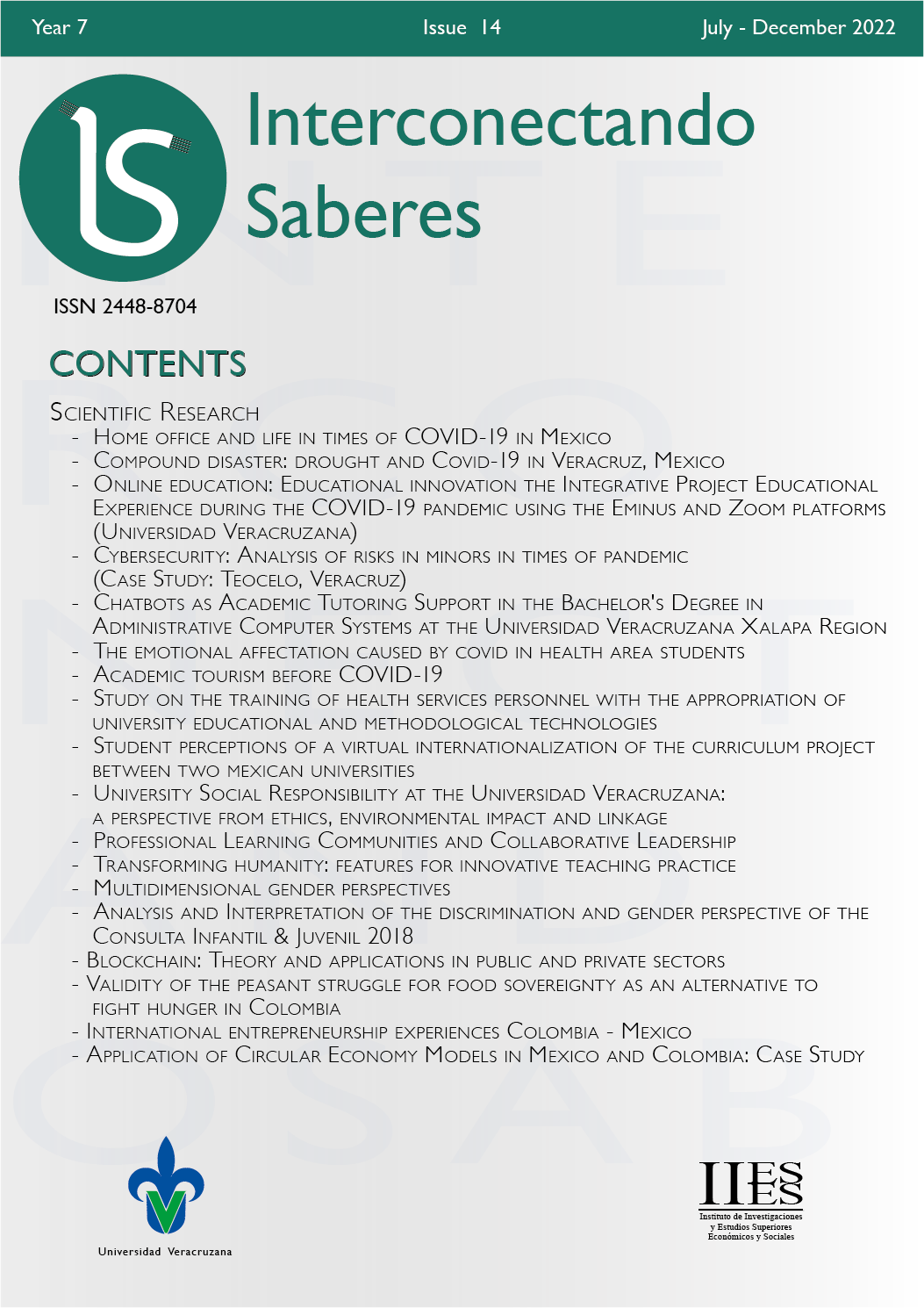Abstract
The first and most emblematic application of blockchain technology is the cryptocurrency called bitcoin. Bitcoin has a market value of more than one trillion dollars and is accepted as a currency in many businesses. However, blockchain nowadays has many different applications outside the financial market. This article aims to describe the main components of blockchain to provide readers with the technical elements for entering the field of distributed technologies and understanding their possible applications. We highlight a wide range of industries and sectors where companies and governments are using this technology to improve their processes and results.
References
Bashir, I. (2017). Mastering blockchain. Packt Publishing Ltd.
Ben Ayed, A, y Belhajji, M.A. (2018). The Blockchain Technology. Int. J. Hyperconnectivity Internet Things, 1(2), 1-11.
Blockchain at Berkele (2018). Practical Byzantine Fault Tolerance. https://www.youtube.com/watch?v=IafgKJN3nwU
Coulouris, G., Dollimore, J., y Kindeberg, T. (2012). Distributed Systems, Concepts and Design, Fifth Edition, Pearson, Addison Wesley.
Deloitte. (2019). Global Blockchain Survey: Blockchain Gets Down to Business. https://www2.deloitte.com/content/dam/Deloitte/se/Documents/risk/DI_2019-global-blockchain-survey.pdf
Kan L., Wey, Y., Hafiz A.M., Siyuan, W., Linchao, G, y Kai, H. (2018). A Multiple Blockchains Architecture on Inter-Blockchain Communication. 2018 IEEE International Conference on Software Quality, Reliability and Security Companion (QRS-C), 2018. 139-145, https://doi.org/10.1109/QRS-C.2018.00037
Katz J. y Lindell Y. (2008). Introduction to Modern Cryptography. Chapman & Hall/CRC cryptography and Network Security.
Lamport, L., Shostai, R., y Andpease, M. (1982), The Byzantine generals problem, ACM Trans. ProgrammingLanguage Systems 4, pp. 382-401.
López-Fuentes F.A. (2015). Sistemas Distribuidos. Universidad Autónoma Metropolitana – Unidad Cuajimalpa, Cd. de México, México.
Nakamoto, S. (2008). Bitcoin: A peer-to-peer electronic cash system. https://bitcoin.org/bitcoin.pdf
PwC. (2018). Global Blockchain Survey 2018. Blockchain is here. What’s your next move? https://www.pwc.com/jg/en/publications/blockchain-is-here-next-move.html
Schroeder M., y Saltzer, J. (1972). A hardware architecture for implementing protection rings. Comm. A.C.M., 15(3), 157-170.
Serale, F., Redl, C., Muente, A. (2019). Blockchain en la administración pública: ¿Mucho ruido y pocos bloques?. Banco Interamericano de Desarrollo. Washington, D.C.
Torregrossa, M. (2018). Blockchain for Public Servants: Everything You Need to Know. Apolitical Blog. https://apolitical.co/solution_article/blockchain-for-public-servants-everything-you-need-to-know/
Yaga, D., Roby, y N., Scarfone, K. (2018). Blockchain technology overview. National Institute of Standards and Technology.
Zambrano, R. (2018). Blockchain: Unpacking the Disruptive Potential of Blockchain Technology for Human Development. White Paper, IDRC.

This work is licensed under a Creative Commons Attribution-NonCommercial-NoDerivatives 4.0 International License.
Copyright (c) 2022 Carlos Reyes Sánchez


